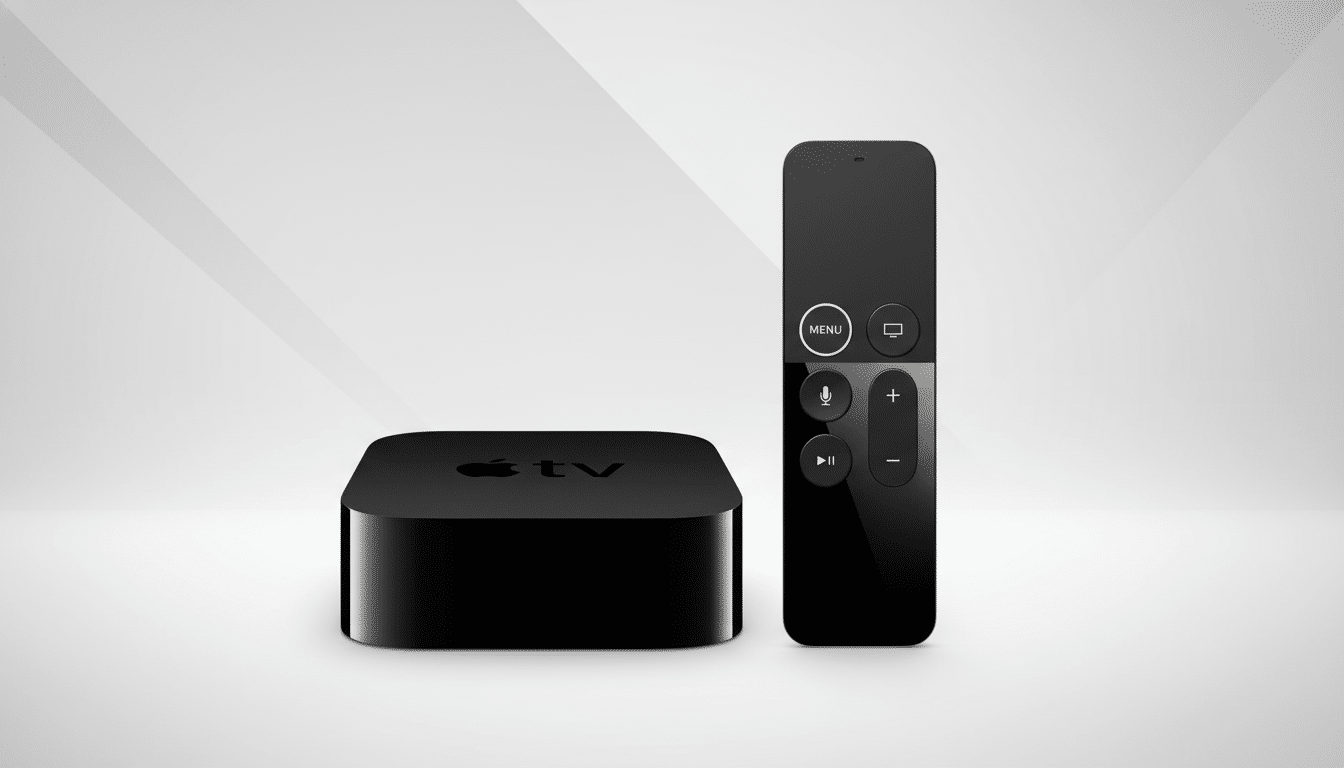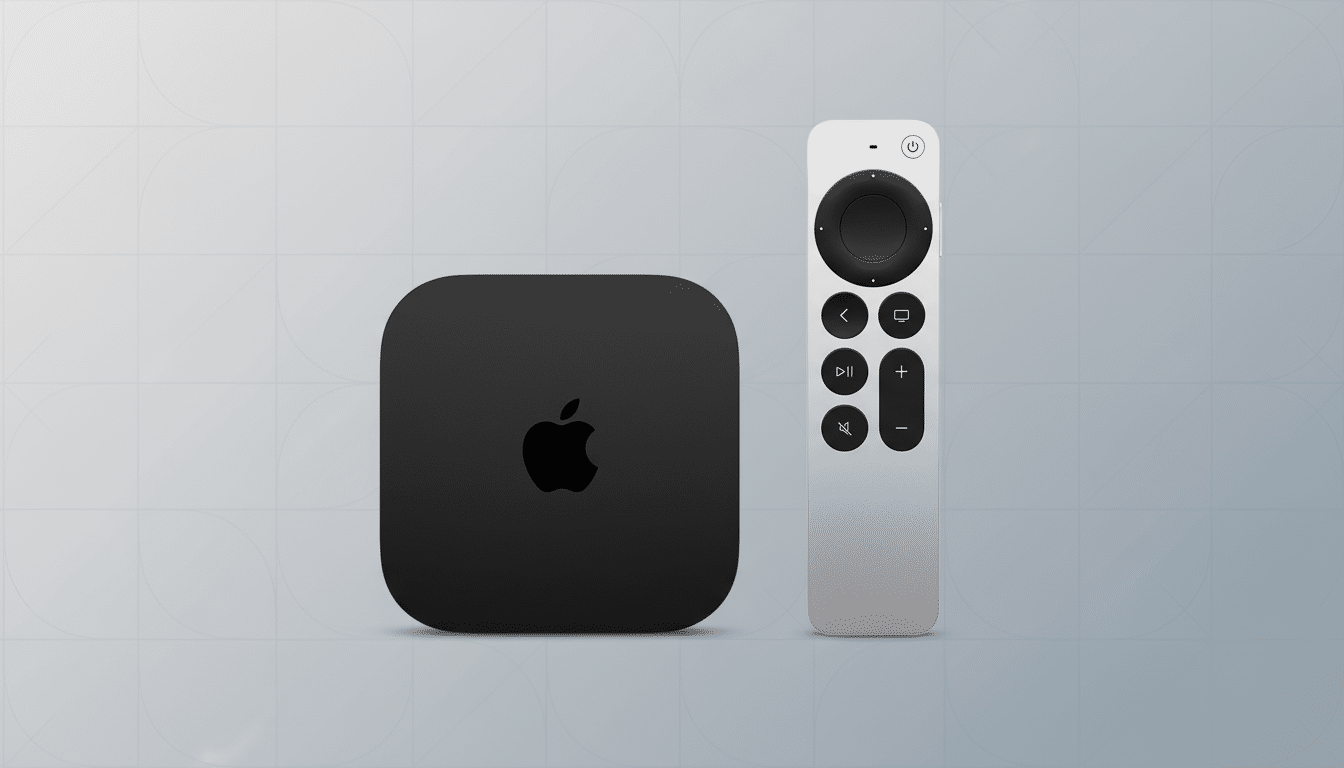Apple has dropped the plus. The company’s streaming service, which has long been promoted as Apple TV+, is being rebranded now as simply Apple TV, a change that harmonizes its presentation across devices, apps and marketing and is meant to signal more cohesive thinking around video.
The change comes without fanfare but noticeable intent: to eliminate friction for viewers, unclog Apple’s product names and play up the master brand. For subscribers, nothing changes in the content or features right away, but how Apple talks about — and sells — its streaming service will be different.
- What Actually Changed in Apple TV’s Rebrand and Rollout
- Why Drop the Plus from Apple’s Streaming Service
- The Naming Tangle with Apple TV 4K Hardware Explained
- Competitive Context and Market Signals in Streaming
- What It Means for Viewers and Distribution Partners
- The Bottom Line on Apple TV’s Streamlined Branding

What Actually Changed in Apple TV’s Rebrand and Rollout
The new name supersedes mentions of Apple TV+ in service names, promotional assets and across the wider Apple experience. Look for it in a phased release across the Apple TV app on iPhone, iPad, Mac, Apple TV 4K and third-party platforms including smart TVs and streaming sticks. This type of update tends to roll out slowly and piece by piece.
Pricing and plans remain as-is. Apple announced a small price bump for its streaming service, to $12.99 in a subsequent readjustment, now more closely aligned with the value of an increasingly muscular slate of originals and live sports strategy. It’s currently offered in more than 100 countries, and it is bundled inside Apple One — one of the major growth levers that now has simplified naming working in its favor.
The slate of content remains the same: prestige dramas, comedies, documentaries, kids programming and Apple’s growing sports portfolio. It’s interesting that Apple is advertising the service in conjunction with F1: The Movie, once again reinforcing how tentpole releases play a role in branding.
Why Drop the Plus from Apple’s Streaming Service
The “plus” era took over streaming in recent years, but consumer research has long revealed confusion over near-identical naming schemes used by multiple services. Branding agencies and media analysts, among them Ampere Analysis, have repeatedly cautioned that overcrowded naming taxonomies create recall drag and add to search friction. Having begun with one of the most spare names possible, Apple is now going back to its roots.
There’s also a practical angle. Apple already had three overlapping labels: the Apple TV app (the hub), Apple TV 4K (the hardware) and Apple TV+ (the service). When you combine the service under “Apple TV,” Apple can talk about it with one name in marketing, on Siri search results and with partner placements. It also aligns more neatly with Apple One and with the popular “Apple TV” tile on non-Apple devices.
The Naming Tangle with Apple TV 4K Hardware Explained
One downside of the rebrand is that confusion about the subscription service and Apple TV 4K streaming box may resurface. Apple normally distinguishes its logos with clear iconography and context — the app and service would show up in software menus, while hardware would bear “4K” or a device-specific label. Anticipate more fine-grained UI signals and copy to clarify what “Apple TV” you are using at any given time.

Within the Apple TV app, Apple also sells third-party subscriptions, which it has historically called Channels. That rebrand doesn’t alter how those partner add-ons are delivered, but a simpler Apple TV brand name can make the storefront less confusing: one destination, many sources, with Apple originals as the showcase.
Competitive Context and Market Signals in Streaming
Apple’s move arrives as part of a wave of streaming identity returns. Warner Bros. Discovery folded HBO Max into Max to stress its wider range of content, while Paramount simplified the naming of its premium tier to reflect more clearly the fact that it absorbed Showtime. Disney has reorganized more Hulu programming into Disney+ in the U.S. as well, simplifying the process of where viewers go to find shows.
There are two forces that drive these movements: discovery and churn. According to Nielsen’s The Gauge, streaming is now responsible for about 40 percent of U.S. television use, redoubling the battle for attention on home screens. Measurement companies like Antenna have cited high and sometimes continued churn across subscription video, prompting platforms to try and make the experience as frictionless as possible every step of the way — from awareness to search results to billing.
For Apple, the brand refresh comes at a time of steady creep into live sports and event cinema. The company has the exclusive rights to Major League Soccer’s MLS Season Pass, the ability to stream certain Major League Baseball games (though not “in-market”), and it has come up multiple times as a future content partner for motorsports and beyond by outlets like Bloomberg and The Athletic. A single “Apple TV” banner that refers to a more flexible draw is easier to slot in next to leagues, studios and talent.
What It Means for Viewers and Distribution Partners
For audiences, the immediate lesson is cosmetic. Your current subscription, watchlist and profiles carry over; you’ll just now see “Apple TV” where “Apple TV+” used to appear. In the long term, a cleaner brand should lead to more reliable voice queries, app store searches and cross-device navigation.
For distribution partners — TV manufacturers, pay-TV providers and retail channels — the simplified label reduces menu clutter and simplifies placement. Look for partner-guideline updates and refreshed assets to repeat across device home screens and promotional pages as the rollout continues.
The Bottom Line on Apple TV’s Streamlined Branding
Rebrands don’t fill content gaps or relieve pressure on costs, but they do clear away unneeded friction. With one clear name — Apple TV — Apple is betting that it will sharpen its brand and make it easier to recall in the jumbled arena of home screens, where streaming is crowded with services like Netflix, Hulu and Amazon Prime Video. The new approach can also better serve a slate that ranges from awards contenders to family fare to live sports. If the change boosts engagement and speeds up the Apple One ramp, the silent rebrand will be a noisy win.

